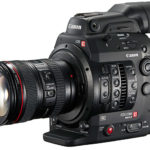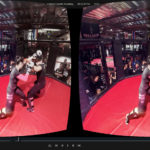
REVIEW: Schneider-Kreuznach Xenon FF-Prime Lenses
Posted on Jan 20, 2016
The Schneider-Kreuznach Xenon 25mm Prime Lens.
Originally launched with just three lenses, Schneider’s range of mid-priced primes, designed to cover full-frame 35mm, continues to expand. Though the lenses have been around for a while, having a Canon C300 Mk II on test was a good opportunity to have another quick look.
The set now includes 18mm, 25mm, 35mm, 50mm, 75mm and 100mm. Aperture is T2.1 for all except the 18mm (T2.4). They are available in Canon EF, PL and Nikon F mounts that are interchangeable – though you need to go to an optical house to get it done.
The lens barrels are all identical (again, with the exception of the 18mm odd one out) with clear, calibrated focus marks – available in imperial or metric – and beautifully smooth, geared iris and focus rings, the latter with a 300˚ angle of rotation. The iris is 14 bladed and forms an almost perfectly circular aperture.
The lens coating resists flare extremely well, and is very colour neutral – with perhaps a very slight warming of the image.
On the C300 Mk II – with its Super35 sensor – the lenses were pretty fabulous. Our kit featured only the 25mm, 35mm, 50mm and 75mm and the centre of their image circle is extremely sharp. Comparing the 35mm against Canon’s EF 35mm f/1.4L II – a very nice lens indeed – the Schneider achieved MTF figures wide open that were very nearly as good as the Canon at its sweet spot of f/8. Centre sharpness varies very little with aperture across the range of lenses – though stopping down to T4 and above will give you the best resolution, until diffraction effects kick in at around T16.
On a full frame camera results weren’t quite as good. Centre sharpness is unaffected, of course, but chromatic aberration was present at the corners, blotting the performance considerably. The 25mm and 35mm were the worst offenders, unsurprisingly, with the 35mm being particularly bad. The test images reproduced here compare the centre with the edge of the Schneider 35mm and the Canon – note that the Canon controls edge aberration much better than the Schneider. The camera used was a Canon 1Ds Mk III, shooting raw images that were developed without aberration correction. Though the Canon lens had this flatter performance, its centre resolution couldn’t match the Schneider – perhaps the design slightly compromises overall sharpness to achieve better edge results?
Stopping all the Schneider lenses down to T4 reduced the chromatic aberration at the edges considerably, though the 35mm continued to be the worst offender – these test images were photographed at T5.6 (f/5.6 for the Canon optic comparison).
At around £2500 (plus VAT) per lens, the Xenon FF-Prime lenses are excellent value for money. On a Super35 camera like the Canon C300 Mk II they perform extremely well. There is a small amount of focus breathing, but it’s well controlled – certainly in comparison to the Canon EF 35mm stills lens, which feels more like a zoom when you rack focus. The requirement to stop down when using full-frame cameras slightly limits their utility, but if you primarily use Super35 but would like the option of covering full frame should you need to, they are worth a look.
 The Schneider-Kreuznach Xenon 100mm Prime Lens.
The Schneider-Kreuznach Xenon 100mm Prime Lens.








